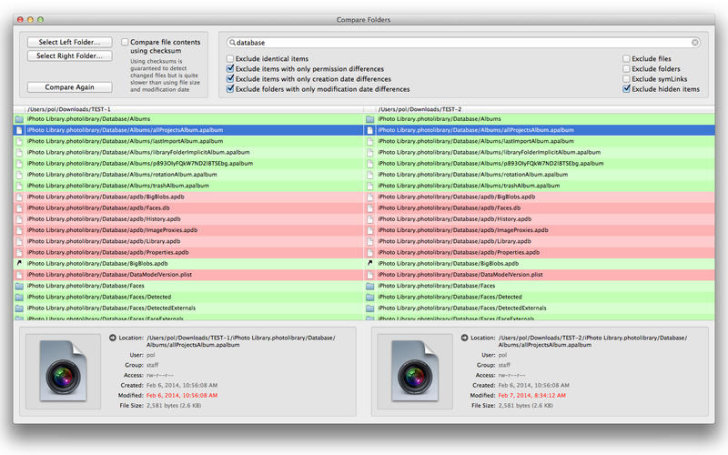Dbconsole 2 1 0 Download For Mac
$./grailsw create-controller Vehicle Created grails-app/controllers/org/grails/guides/VehicleController.groovy Created src/test/groovy/org/grails/guides/VehicleControllerSpec.groovy $./grailsw create-controller Make Created grails-app/controllers/org/grails/guides/MakeController.groovy Created src/test/groovy/org/grails/guides/MakeControllerSpec.groovy $./grailsw create-controller Model Created grails-app/controllers/org/grails/guides/ModelController.groovy Created src/test/groovy/org/grails/guides/ModelControllerSpec.groovy. Dynamic scaffolding is powerful and sometimes will provide all the functionality you need (especially for an administrative site where data access is more important than presentation). But it’s quite likely that you will feel the need to customize the generated views and controllers, either to change their appearance or to add custom logic and functionality. Grails anticipates this need and provides a set of generate commands that can generate the controllers and/or views that you just saw, allowing you to modify them to suite your needs. 1 The annotation configures the transactional behavior of the controller or method. Transactions are used to manage persistence and other complicated operations that should be completed together (and potentially rolled-back if any one of the steps fails).
For more information on transactions, see the 2 The params object is available to all controllers, and contains a map of any URL parameters on the request. You can refer to any parameter by name to retrieve the value: params.myCustomParameter will match this URL parameter: url?myCustomParameter=hello. See the for more detail. 3 The respond method takes an object to return to the requestor, using to choose the correct type (for example, a request’s Accept header might specify JSON or XML).
Respond also can accept a map of arguments, such as model (which defines the way the data is loaded on a page). For more on how to use the respond method, see the. 4 request is available on all controllers, and is an instance of the Servlet API’s class. You can access request headers, store properties in the request scope, and get information about the requestor using this object. For more see the. 5 flash is a map that stores objects within the session for the next request, automatically clearing them after that next request completes.

This is useful for passing error messages or other data that you want the next request to access. For more, see the. 6 The redirect method is a simple one - it allows the action to redirect the request to another action, controller, or a URI. You can also pass along parameters with the redirect.
See the for more. 7 The render method is a less sophisticated version of respond - it doesn’t perform content negotiation, so you have to specify exactly what you want to render. You can render plain text, a view or template, an HTTP response code, or any object that has a String representation. 1 We’re calling the respond method to render a Groovy map of content to the requestor, containing a name property from the session (defaulting to 'User' if no session value exists) and the current total of Vehicle instances from GORM’s count method. 2 session is an instance of the Servlet API’s`HttpSession` class, and is available in every controller. We can retrieve and store properties in the session - in this case, we’re storing a String with the attribute name in the session.
For more see the. 3 We’re using flash scope to set a message to display upon the next request 4 We don’t have any specific content to display in this action, so we issue a redirect back to the index action (note that in Groovy method parenthesis are optional so long as there is at least one argument). Grails' primary view technology is. It follows many of the conventions of JSP and ASP, but naturally it is based upon the Groovy language. GSP pages are essentially HTML documents, but they support a number of special tags (typically prefix with g:) to allow programmatic control over your views.

You can even write arbitrary Groovy code in your GSP pages, but this is strongly discouraged - ideally, the GSP page should only contain view-related logic and content; any sort of data manipulation or processing should happen in the controller (or in a service) prior to the view being rendered.
Then we could refer to the list in the same way that we access name and vehicleTotal. Go ahead and change the controller and view to use this better approach - the completed project has this change already made if you need help. 7.4 GSP Tags Links.
Testing is a vital part of web application development. Grails provides support for three types of testing: unit tests, integration tests, and functional tests. Are usually the simplest kind, focusing on a specific piece of code without depending on other parts of your app.
Require the Grails environment to be up and running, and are used to test features that depend on database or network resources. Require the app to be running, and are designed to exercise the application almost as a user would, by making HTTP requests against it. These tend to be the most complex tests to write. given indicates a 'setup' block - here you can set up any objects or variables needed to complete your test. when and then are one of the most common 'pairings' in Spock (another one, not used here, is expect/ where - they define a statement and an expected result.
Dbconsole 2 1 0 Download For Mac
and simply continues on the current then block, but it allows you to specify your expectations for multiple assertions. Note that all of these blocks accept (optionally) a string description, which makes your test even more readable.
E.g., when: 'this method is called', then: 'expect this result'.